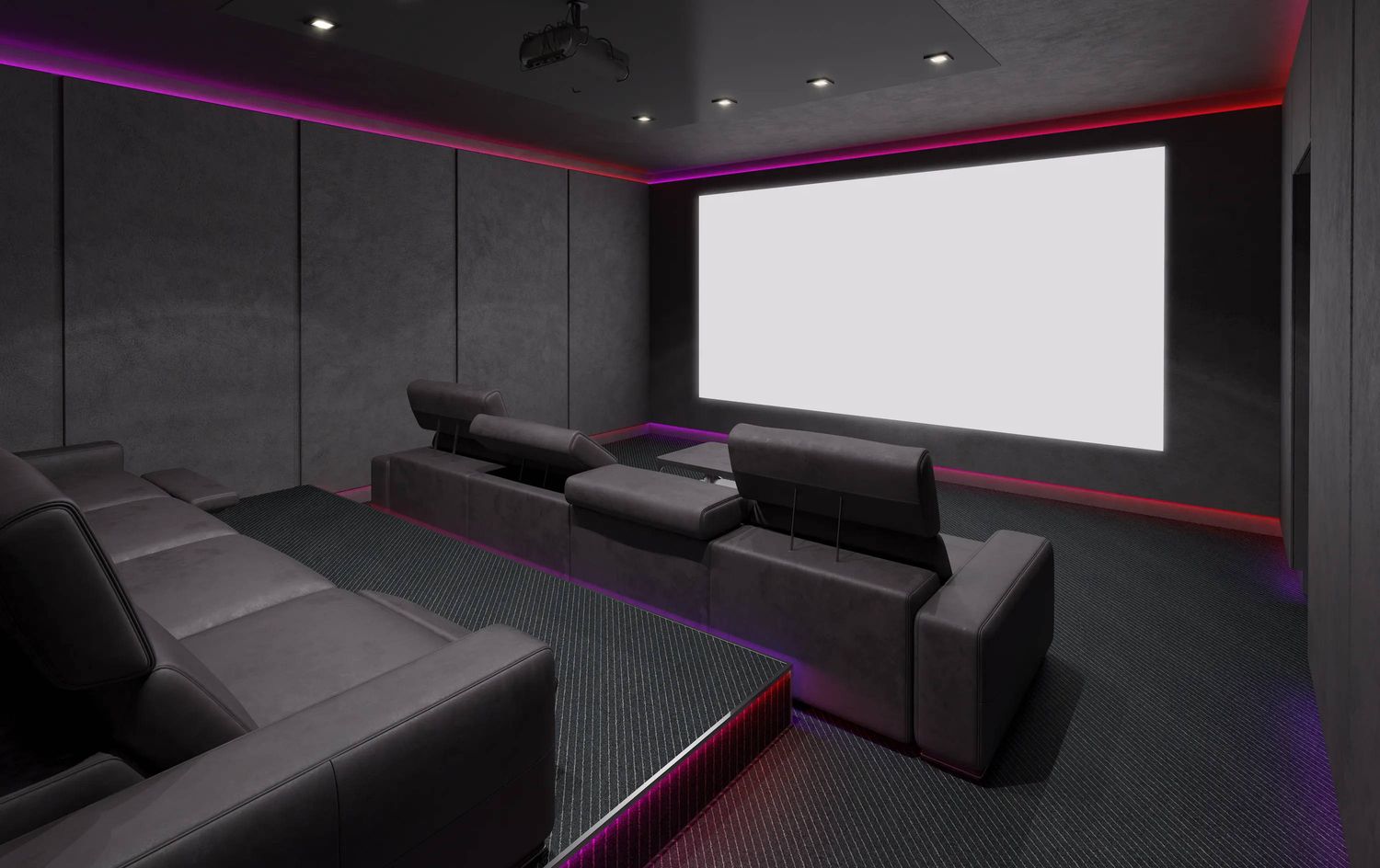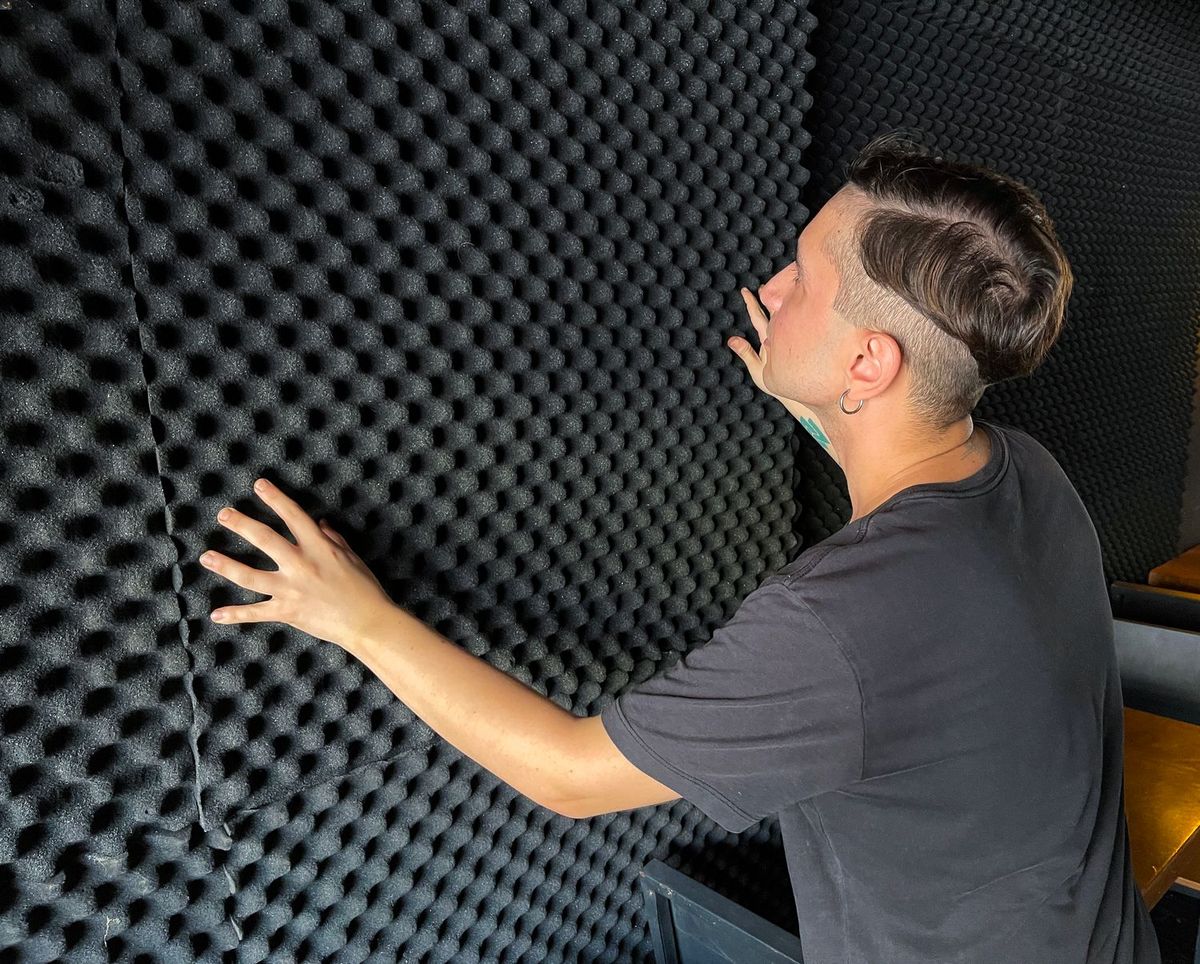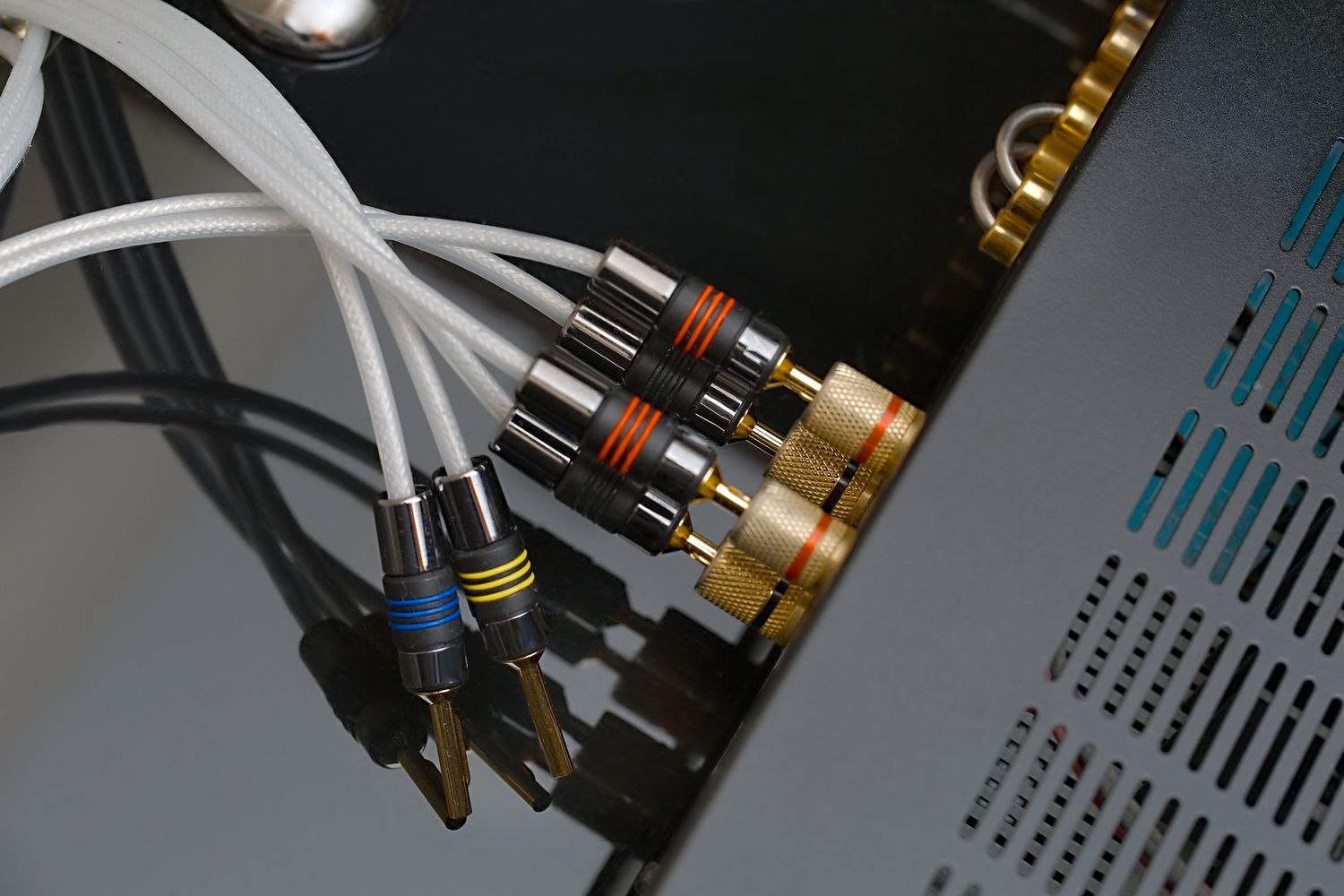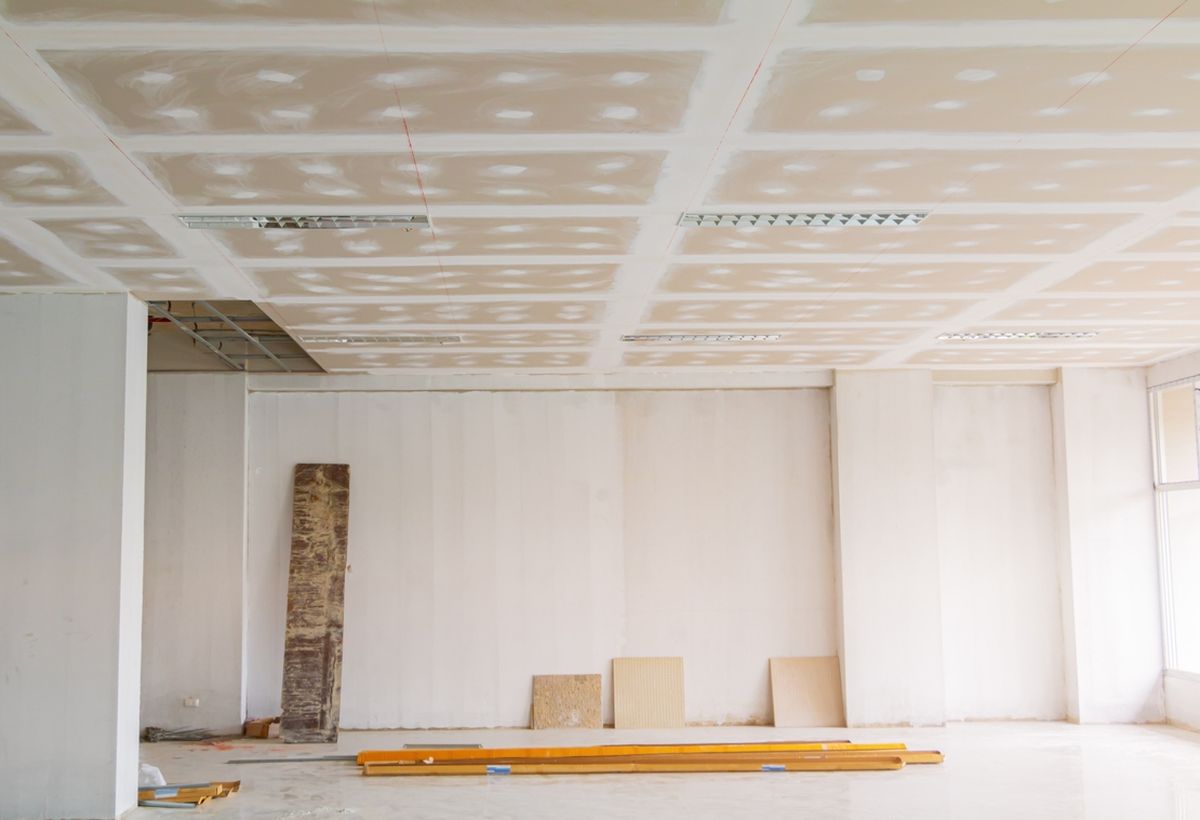Home>Production & Technology>Soundproofing>How Much Soundproofing For Home Theater


Soundproofing
How Much Soundproofing For Home Theater
Published: January 26, 2024
Enhance your home theater experience with soundproofing solutions. Discover how much soundproofing you need to create a cinematic and noise-free environment.
(Many of the links in this article redirect to a specific reviewed product. Your purchase of these products through affiliate links helps to generate commission for AudioLover.com, at no extra cost. Learn more)
Table of Contents
- Introduction
- Importance of Soundproofing for Home Theaters
- Factors to Consider Before Soundproofing
- Types of Soundproofing Materials
- Acoustic Treatments for Home Theaters
- Soundproofing Techniques for Walls
- Soundproofing Techniques for Floors
- Soundproofing Techniques for Ceilings
- Tips for Achieving Optimal Soundproofing in Home Theaters
- Conclusion
Introduction
Creating the perfect home theater experience requires careful consideration of various factors, and one crucial aspect that often gets overlooked is soundproofing. Soundproofing your home theater not only prevents sound leakage and disturbances, but it also helps to enhance the overall audio quality and immerse you in the movie-watching experience.
When it comes to soundproofing, it is important to understand that it goes beyond simply blocking external noise. The goal is to create a controlled acoustic environment where sound is optimized within the home theater space. By employing the right soundproofing techniques and using appropriate materials, you can enjoy crystal clear sound without any interference or distractions.
In this article, we will explore the importance of soundproofing for home theaters and provide you with valuable insights and tips to optimize your theater’s acoustics. Whether you are planning to set up a new home theater or looking to improve your existing setup, the information shared here will help you achieve the best possible sound experience.
Before delving into the specifics of soundproofing, it is important to understand the factors that need to be considered to determine the level of soundproofing required for your home theater. Let’s explore these factors in the next section.
Importance of Soundproofing for Home Theaters
Soundproofing is a crucial aspect of creating an immersive and enjoyable home theater experience. Here are some key reasons why soundproofing is important for home theaters:
- Noise Control: One of the main benefits of soundproofing is the ability to control and reduce external noise. Whether it’s the sound of traffic, neighbors, or other household activities, unwanted noise can be a major distraction during movie-watching. By effectively soundproofing your home theater, you can create a quiet and peaceful environment, allowing you to fully immerse yourself in the movie’s audio.
- Enhanced Sound Quality: Soundproofing not only prevents external noise from entering the theater but also helps to optimize the sound quality within the space. By minimizing sound reflections and echoes, you can achieve a more balanced and dynamic audio experience. A properly soundproofed home theater allows you to hear every detail, from the subtlest whisper to the most thunderous explosion, just as the sound engineers intended.
- Privacy and Consideration: Home theaters are often located in shared living spaces or multi-level buildings where sound can easily travel between rooms. Soundproofing ensures that you can enjoy your movie or gaming sessions without disturbing others around you. It also enables you to maintain privacy, allowing you to fully engross yourself in the movie without worrying about disturbing family members or neighbors.
- Optimal Acoustic Performance: When it comes to audio, the room’s acoustics play a critical role in how sound is perceived. Soundproofing combined with proper acoustic treatments can help control sound reflections, standing waves, and other acoustic issues that can negatively impact the overall audio experience. A well-designed and soundproofed home theater ensures that sound is reproduced accurately and faithfully, providing a more immersive and realistic experience.
Now that we understand the importance of soundproofing for home theaters, let’s explore the various factors that need to be considered before embarking on a soundproofing project.
Factors to Consider Before Soundproofing
Before diving into the world of soundproofing, there are several factors to consider to ensure that you achieve optimal results. These factors will help determine the specific soundproofing techniques and materials needed for your home theater. Here are some key factors to consider before embarking on a soundproofing project:
- Location: Take into account the location of your home theater within your house or apartment. Is it in a basement or on an upper floor? Understanding the location will help you assess potential sources of noise intrusion. For example, a home theater located on a lower level may be more susceptible to external noise such as footfall or HVAC system vibrations.
- Existing Structure: Consider the construction materials and layout of your home theater space. Concrete or brick walls provide better soundproofing properties than drywall. Identify any existing sound leakage points such as gaps, cracks, or thin walls that might allow sound to escape or external noise to enter the room.
- Budget: Determine your budget for the soundproofing project. This will help you choose the most cost-effective solutions and prioritize where to allocate your resources. It’s important to strike a balance between your desired soundproofing goals and your budget constraints.
- Noise Sources: Identify the primary sources of noise that you want to eliminate or reduce. These may include traffic noise, neighbor noise, or internal noise from other parts of the house. Understanding the specific noise sources will allow you to focus on the most effective soundproofing techniques for your situation.
- Room Size and Shape: Consider the dimensions and layout of your home theater space. The size and shape of the room can affect sound reflections and resonances. Larger rooms may require additional sound-absorbing materials, while irregularly shaped rooms may require different strategies to control sound reflections.
- Desired Sound Levels: Determine the desired sound levels within your home theater. Do you want complete silence or just minimal noise intrusion? This will help guide your soundproofing efforts and the level of sound insulation required for the space.
- Building Regulations: Familiarize yourself with any building regulations or noise ordinances that apply in your area. Certain locations may have specific requirements or restrictions on soundproofing measures that you need to adhere to.
By considering these factors, you will be able to tailor your soundproofing approach to your specific needs and create a home theater that delivers an exceptional audio experience. In the next sections, we will explore the different types of soundproofing materials and techniques that can be used to optimize the acoustics of your home theater.
Types of Soundproofing Materials
When it comes to soundproofing your home theater, there are various materials available that can help minimize sound transmission and improve the overall acoustics of the space. Here are some commonly used soundproofing materials:
- Mass Loaded Vinyl (MLV): MLV is a dense, flexible material that is effective at blocking sound. It can be installed on walls, floors, and ceilings to reduce airborne noise and vibrations. MLV is an excellent choice for soundproofing against external noise sources such as traffic or neighbor noise.
- Acoustic Panels: Acoustic panels are designed to absorb sound reflections and reduce echoes within a room. They are typically made with sound-absorbing materials such as foam or fiberglass and can be placed strategically on walls or ceilings to improve sound quality and reduce reverberation.
- Soundproof Curtains: Soundproof curtains are made with multiple layers of dense fabric that help block sound waves from entering or leaving a room. They are a versatile and cost-effective solution for controlling noise and can be easily installed on windows or used as room dividers.
- Green Glue: Green Glue is a viscoelastic compound that is applied between layers of drywall or other surfaces. It converts sound energy into small amounts of heat, thereby reducing sound transmission. Green Glue is commonly used to create soundproof walls and ceilings in home theaters.
- Insulation: Proper insulation plays a vital role in soundproofing. Insulating materials, such as mineral wool or fiberglass batts, can be installed within walls, floors, and ceilings to reduce sound transmission. Insulation helps absorb sound waves and prevents them from traveling through the structure of the room.
- Resilient Channels: Resilient channels are metal strips that are attached to the studs or joists of a wall or ceiling. They create a gap between the surface and the structure, reducing the transfer of sound vibrations. By decoupling the surface from the structure, resilient channels help reduce sound transmission.
- Sealants: Proper sealing of gaps and cracks is essential for an effective soundproofing solution. Acoustic sealants can be used to seal any air leaks around windows, doors, baseboards, or electrical outlets. By eliminating these small openings, you can prevent sound leakage and improve the overall soundproofing performance.
It’s important to note that different soundproofing materials have varying levels of effectiveness depending on the type and frequency of the sound you are trying to control. Consulting with a professional or doing thorough research can help you determine which materials are best suited for your specific home theater setup.
In the next sections, we will explore specific soundproofing techniques for different areas of your home theater, such as walls, floors, and ceilings, to help you achieve optimal soundproofing results.
Acoustic Treatments for Home Theaters
Acoustic treatments play a crucial role in achieving optimal sound quality and creating a immersive home theater experience. By strategically placing acoustic panels, diffusers, and bass traps, you can control sound reflections, eliminate echoes, and improve the overall acoustic performance of your theater. Here are some popular acoustic treatments for home theaters:
- Acoustic Panels: Acoustic panels are designed to absorb sound waves and reduce reflections, improving the clarity and intelligibility of audio. These panels are typically made from materials such as foam or fiberglass, and they come in various shapes and sizes. They can be placed on walls, ceilings, or even behind your cinema screen to minimize sound reflections and enhance the listening experience.
- Diffusers: Diffusers are used to scatter sound waves, preventing the formation of echoes and reducing standing waves within the room. They are particularly useful in larger home theaters or rooms with irregular surfaces. Diffusers come in different designs, such as quadratic diffusers, skyline diffusers, and binary diffusers, each with its own unique scattering properties.
- Bass Traps: Low-frequency sounds, often referred to as bass, can be difficult to manage in a home theater. Bass traps are specifically designed to absorb and control these low-frequency sounds, preventing them from building up in certain areas of the room. Placing bass traps strategically in corners or along walls can help achieve a more balanced bass response and improve the overall audio quality.
- Acoustic Ceiling Clouds: Ceiling clouds are suspended panels or baffles that are installed on the ceiling to absorb sound reflections and reduce reverberation. These clouds are particularly effective in rooms with high ceilings or reflective surfaces. They can be customized in terms of size and shape to fit the specific needs of your home theater.
- Acoustic Carpets and Curtains: Adding acoustic carpets or thick curtains to your home theater can further enhance sound absorption and reduce sound reflections. Carpets can help minimize floor reflections and vibrations, while thick curtains can be used to cover windows and walls, preventing sound from escaping or external noise from entering the room.
When implementing acoustic treatments, it’s important to strike a balance between absorption and diffusion. Too much absorption can make the room sound dead, while too little can result in a boomy or echoey sound. Consulting with an acoustic professional or doing thorough research can help you determine the ideal placement and combination of treatments for your specific home theater setup.
Now that we have explored the various acoustic treatments available, let’s move on to soundproofing techniques that can be applied to different surfaces in your home theater.
Soundproofing Techniques for Walls
Walls are one of the primary areas where sound transmission can occur in a home theater. Soundproofing the walls is crucial to ensure minimal sound leakage and optimal audio performance within the space. Here are some effective soundproofing techniques for walls:
- Add Mass: Increasing the mass of the walls is an effective way to reduce sound transmission. You can achieve this by adding an additional layer of drywall or using specialized soundproofing materials, such as mass-loaded vinyl (MLV), which is a dense and flexible material that helps block sound vibrations.
- Decouple the Walls: Decoupling the walls can prevent sound vibrations from easily traveling through the structure. This can be achieved by installing resilient channels, a type of metal strip, between the wall studs and the drywall. The resilient channels create a gap, reducing the direct transfer of sound vibrations.
- Seal Gaps and Cracks: Even the smallest gaps and cracks can allow sound to leak in or out of the room. Seal any gaps or cracks in the walls using acoustic sealants or caulking. Pay close attention to areas around electrical outlets, windows, and doors, as these are common sources of sound leakage.
- Use Green Glue: Green Glue is a popular soundproofing compound that is applied between layers of drywall. It converts sound energy into heat, reducing sound transmission. Applying Green Glue between the existing drywall and an additional layer of drywall can significantly improve soundproofing performance.
- Install Acoustic Panels: Acoustic panels not only absorb sound reflections but also contribute to soundproofing by reducing sound transmission. Install acoustic panels on the walls to absorb and scatter sound waves, reducing echoes and minimizing sound leakage. Make sure to strategically place the panels to maximize their effectiveness.
- Insulate the Walls: Insulation helps absorb sound and prevents it from traveling through the walls. Consider adding insulation material, such as mineral wool or fiberglass batts, within the wall cavities. This will help improve the overall soundproofing performance of the walls.
Implementing a combination of these techniques can significantly enhance the soundproofing of your home theater walls, reducing sound transmission and creating a more immersive audio experience. It’s important to carefully plan and consider the specific requirements of your space when choosing the appropriate soundproofing techniques for your walls.
Now that we have covered soundproofing techniques for walls, let’s explore the next important area in your home theater: the floors.
Soundproofing Techniques for Floors
Sound transmission through floors can be a significant concern in home theaters, especially in multi-level buildings or rooms with hard flooring surfaces. Soundproofing the floors is essential to prevent sound from traveling between floors and to improve the overall sound quality within the theater. Here are some effective soundproofing techniques for floors:
- Carpeting or Rugs: Adding carpeting or area rugs to the floor can help reduce sound transmission by absorbing impact noise and floor reflections. The thicker and denser the carpet or rug, the better its soundproofing properties. Consider using sound-absorbing underlayment beneath the carpet for additional noise reduction.
- Acoustic Underlayment: Installing an acoustic underlayment beneath the flooring can provide additional sound insulation. Acoustic underlayment is typically made from materials like cork, rubber, or foam, which help absorb impact noise and reduce vibrations. It can be used with both carpeting and hard flooring surfaces.
- Resilient Flooring: Opting for a resilient flooring material, such as cork or rubber flooring, can help reduce impact noise between floors. These materials have inherent sound-damping properties and can minimize sound transmission. Additionally, they provide a comfortable and cushioned surface for walking and absorbing vibrations.
- Soundproof Floor Underlayment: Specialized soundproof floor underlayments, such as mass-loaded vinyl (MLV) or rubberized materials, can be installed beneath the flooring to prevent sound transmission. These underlayments add mass and density to the floor, helping to block airborne and impact noise from traveling between floors.
- Seal Floor Gaps: Similar to sealing gaps in walls, it is essential to seal any gaps or openings in the floor to prevent sound leakage. Seal gaps around the edges of the flooring, baseboards, and any penetrations in the floor, such as vents or cables, using acoustic sealant or caulking.
- Decouple Floating Floor: For superior soundproofing, consider floating the floor by installing a floating floor system. This involves creating a layer of cushioning or resilient materials between the subfloor and the flooring, isolating them from direct contact. This decoupling technique helps reduce impact noise and vibrations.
Combining these techniques can significantly improve the soundproofing performance of your home theater floor, ensuring reduced sound transmission and enhancing the overall audio experience. Keep in mind that the choice of technique may depend on the existing flooring material and the level of soundproofing required.
Now that we have covered soundproofing techniques for floors, let’s move on to the next crucial area: the ceilings.
Soundproofing Techniques for Ceilings
Soundproofing the ceiling is vital to minimize sound transmission from the home theater to other rooms or floors in the building. Additionally, proper soundproofing techniques for the ceiling can help improve the overall audio quality within the theater. Here are some effective soundproofing techniques for ceilings:
- Acoustic Ceiling Panels: Installing acoustic ceiling panels can absorb sound reflections and reduce reverberations, improving the clarity of audio within the theater. These panels are designed to absorb sound waves and prevent them from bouncing off the ceiling, resulting in enhanced sound quality and reduced sound leakage.
- Mass-Loaded Vinyl (MLV): Using mass-loaded vinyl (MLV) as a ceiling soundproofing material can effectively reduce airborne sound transmission. MLV can be installed on the ceiling to add mass and density, blocking sound vibrations from entering or escaping the room. It is particularly useful for blocking external noise sources.
- Resilient Channels: Just as with walls, you can use resilient channels on the ceiling to decouple it from the structure. By installing resilient channels between the actual ceiling surface and the joists or beams, you can minimize the direct transfer of sound vibrations and reduce sound transmission.
- Soundproof Insulation: Installing soundproof insulation in the ceiling can improve the soundproofing performance. Materials such as mineral wool or fiberglass batts can absorb sound waves and prevent them from passing through the ceiling structure. Insulation can help reduce both airborne and impact noise from above or below the home theater.
- Seal Air Leaks: Ensure proper sealing of any air leaks in the ceiling that can allow sound leakage. Use acoustic sealants or caulking to seal gaps around light fixtures, vents, or any other penetrations in the ceiling. This will help reduce sound transmission and prevent unwanted noise from traveling to other areas of the building.
- Suspended Ceiling: Installing a suspended or drop ceiling can provide an additional layer of soundproofing. The space created between the existing ceiling and the suspended ceiling can be filled with sound-absorbing materials or insulation. This can help minimize sound transmission and improve the acoustic performance of the home theater.
Implementing these soundproofing techniques for the ceiling can significantly reduce sound transmission and ensure a more controlled audio environment within your home theater. The choice of technique will depend on the existing ceiling structure and the level of soundproofing required. It is important to consider the specific needs of your theater space before deciding on the appropriate soundproofing solutions.
Now that we have covered soundproofing techniques for ceilings, let’s move on to some general tips to achieve optimal soundproofing in your home theater.
Tips for Achieving Optimal Soundproofing in Home Theaters
Creating the perfect soundproofing for your home theater requires careful planning and attention to detail. Here are some tips to help you achieve optimal soundproofing in your home theater:
- Plan the Layout: Consider the layout of your home theater room and how it can impact the sound. Ideally, the theater should be located in an area of the house that is isolated from external noise sources and other rooms. Avoid positioning the theater near bedrooms or frequently used areas to minimize disturbances.
- Use Double Drywall: Installing double layers of drywall with Green Glue or other sound-damping materials between them can significantly improve soundproofing performance. The mass and density of double drywall layers help block sound transmission and reduce sound leakage.
- Seal Openings: Pay attention to sealing any openings or gaps that can allow sound to leak in or out of the theater. Use acoustic sealants or caulking to seal gaps around windows, doors, electrical outlets, and ventilation ducts. Proper sealing ensures minimal sound leakage and maximizes soundproofing effectiveness.
- Select Soundproof Doors: Invest in high-quality soundproof doors to minimize sound transmission. Look for doors with solid cores and weatherstripping to form a tight seal when closed. Consider adding door sweeps or automatic door bottoms to further enhance soundproofing.
- Invest in Soundproof Windows: Windows are often weak spots for soundproofing. Consider installing soundproof windows or using soundproof window inserts to block external noise. Thick curtains or soundproof shutters can also help reduce sound transmission through windows.
- Don’t Forget the HVAC System: Ensure that your heating, ventilation, and air conditioning (HVAC) system is designed to minimize noise. Use insulation around ductwork and consider installing soundproof ducts for quieter airflow. Positioning the HVAC equipment away from the theater room can also help reduce noise disturbances.
- Acoustic Treatments: Incorporate acoustic treatments, such as panels, diffusers, and bass traps, strategically within your theater space. These treatments help control sound reflections, minimize echoes, and enhance the overall sound quality. Experiment with different panel placements to find the best setup for your room.
- Consult with Professionals: If you have specific soundproofing concerns or require assistance with complex home theater setups, consider consulting with professionals who specialize in acoustics and soundproofing. They can provide expert advice tailored to your specific needs and ensure optimal soundproofing results.
By following these tips and implementing soundproofing techniques specific to each area of your home theater, you can create an immersive and high-quality audio experience without disturbing others in your household or being affected by external noise. Take the time to carefully plan and execute your soundproofing project, and enjoy the ultimate movie-watching experience in your home theater!
Now that we have covered the essential tips for achieving optimal soundproofing, let’s conclude our discussion.
Conclusion
Soundproofing is an essential aspect of creating an optimal home theater experience. By effectively soundproofing your theater, you can minimize sound leakage, reduce external noise disturbances, and enhance the overall audio quality within the space. Through careful planning and implementation of soundproofing techniques and materials, you can fully immerse yourself in movies, music, and games without any distractions or disruptions.
When considering soundproofing for your home theater, it’s important to assess factors such as location, existing structure, budget, noise sources, room size and shape, desired sound levels, and any building regulations. These factors will help determine the specific soundproofing techniques and materials that are most suitable for your setup.
From adding mass and decoupling walls and ceilings, to using acoustic treatments like panels, diffusers, and bass traps, various strategies can be employed to control sound transmission and optimize the acoustics of your home theater. Additionally, proper sealing of gaps, investing in soundproof doors and windows, and maintaining a quiet HVAC system all contribute to achieving optimal soundproofing results.
Remember, achieving excellent soundproofing requires a balance between absorption, diffusion, and blocking sound transmission. Consulting with professionals can provide valuable guidance and ensure the best outcomes for your specific home theater goals.
By following the tips and implementing the techniques shared in this article, you can create a home theater that delivers a truly immersive and captivating audio experience. Unleash the full potential of your home theater and enjoy movies, music, and gaming in a soundproofed space that enhances every sound detail while providing privacy and consideration for others.
Investing in soundproofing for your home theater is an investment in your entertainment enjoyment. So, go ahead and create a space where sound comes alive, enveloping you in a world of immersive audio experiences!











